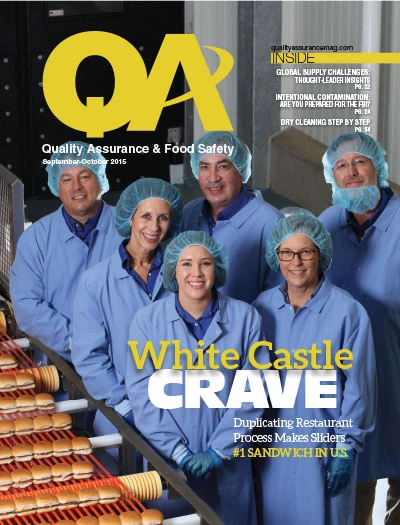Q.What is the difference between an inspection and an audit? What does each include and how are they connected? Do we still need to train facility personnel on pest control and check on the program?
A.On more than one occasion, I’ve been in a food plant where the staff is confused about how inspections and audits differ. To provide a brief explanation of each and the differences between them:
- An inspection is an assessment of a moment in time which identifies positive or negative conditions as observed by the inspection team. Consider it a snapshot of what is happening in a plant at the time the inspection takes place.
- An audit is a systematic evaluation to determine if programs and related activities achieve planned expectations. It includes reviewing and challenging written programs, documentation of activities and records, corrective actions, and trends.
An inspection is an extensive physical observation of the facility, equipment, and personnel practices. The main aim is to collect information to determine compliance with plant programs. It is useful to identify and monitor both positive and negative conditions during an inspection, as including positive comments and photographic evidence will reinforce best practices and help motivate personnel.
If needed, an inspection may initiate immediate corrective actions, particularly where something is easier to correct now rather than later (e.g., closing a door that was found open). However, that doesn’t always provide a solution to the problem, because there was no probe into the reason why the door was left open in the first place, to ensure it doesn’t reoccur.
Another reason that immediate corrective actions may be needed could be because an imminent food safety hazard was identified. For example, if it is discovered that the metal detector is not detecting or rejecting test pieces, affected product may immediately be blocked to ensure that it does not get shipped to customers. This is only the immediate reaction and would still involve further planning to fully solve the issue.
An inspection can often lead to an evaluation of programs and systems, which is the point where the inspection becomes an audit. For example, after identifying a particularly dirty area in the plant during an inspection, the team would need to review documentation to ensure the issue is evaluated and corrected.
Documentation review would include:
- Checking if that particular area was included in the master cleaning schedule.
- Cleaning frequency.
- Monitoring records to verify cleaning was conducted according to schedule.
- Work instructions to ensure that cleaning would address the issue noted if completed properly.
In this case, an observation made during an inspection would lead to an audit of the cleaning program.
An inspection is a physical evaluation or observation of what is happening in the plant at a specific moment in time and an audit is the review and evaluation of written programs and procedures. A combination of the two helps determine the correlation between documented procedures and the actual execution by personnel in the plant. A procedure audit following an inspection finding can help identify the root cause and may lead to long-term corrective actions and continuous improvement.
The author is Global Manager, Food Safety Services Innovation, AIB International.

Explore the October 2015 Issue
Check out more from this issue and find your next story to read.
Latest from Quality Assurance & Food Safety
- Hearthside Food Solutions Recalls Breakfast Sandwiches Due to Undeclared Allergen
- Walker’s Wine Juice Recalls Pumpkin Juice Due to Botulism Risk
- The Cascading Food Safety Impacts of Tariffs on the Food Industry
- Tyson Ventures Calls Startups to Apply for Tyson Demo Day
- Student Finalists Selected for IFT Product Development Competitions
- Martin A. Makary Sworn in as FDA Commissioner
- Cargill Kitchen Solutions Recalls Liquid Egg Products Due to Unapproved Substance
- Eagle Product Inspection’s PXT and SimulTask PRO Integrate for Contaminant Detection





